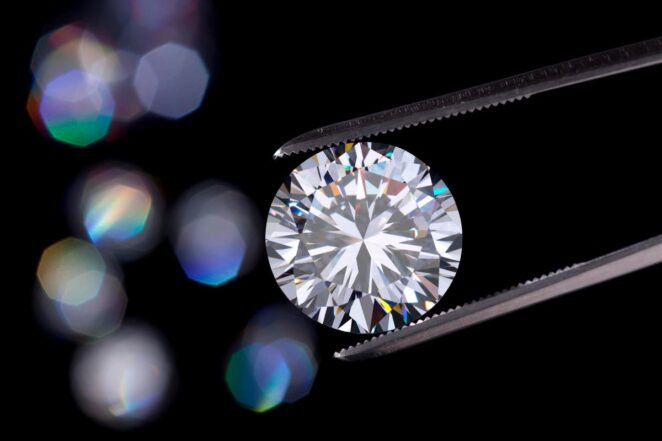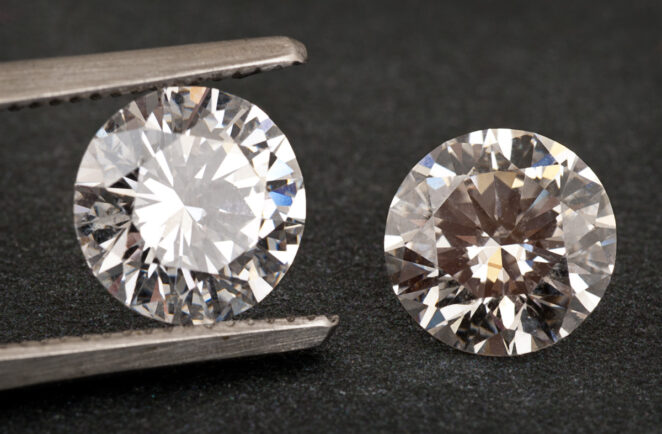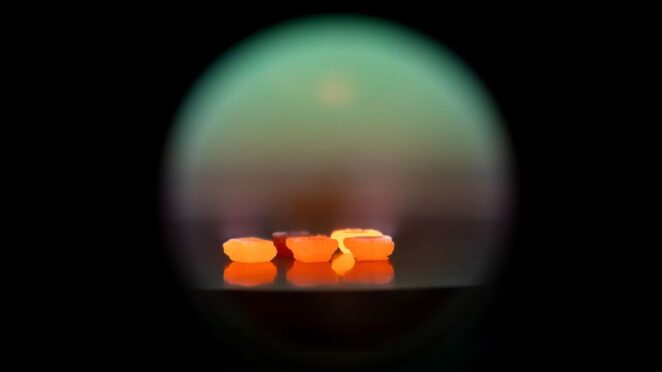Diamonds have long been coveted for their rarity, beauty, and perceived value. However, the process of mining them has come under scrutiny for its ethical and environmental implications. Enter lab grown diamonds – a modern solution that offers transparency, ethical sourcing, and environmental benefits.
In this blog post, we’ll explore the differences between lab grown and natural diamonds, the transparency and ethical considerations of lab grown ones, the environmental benefits, cost comparison, popular uses for them in jewelry, advancements in technology for lab grown ones, and their future in the jewelry industry.
Differences Between Lab Grown and Natural Diamonds

The primary difference between lab grown and natural diamonds is their origin. Natural ones are formed deep within the earth’s crust over millions of years, while lab grown ones are created in a matter of weeks or months in a controlled laboratory environment. However, the physical and chemical properties of lab grown diamonds are identical to natural ones, making them indistinguishable to the naked eye and to most gemological testing equipment.
The Transparency of Lab Grown Diamonds
One of the greatest benefits of lab grown diamonds is their transparency. With natural diamonds, it can be difficult to trace their origin and ensure ethical sourcing. In contrast, lab grown ones have a fully transparent supply chain. Each diamond can be traced back to its laboratory of origin, providing consumers with peace of mind that it has been ethically sourced.
Ethical Considerations of Lab Grown Diamonds

The ethical considerations of lab grown diamonds are significant. The process of mining has been linked to human rights abuses, including forced labor and child labor. In contrast, lab grown ones are produced in a controlled laboratory environment, ensuring that there are no human rights abuses involved in their production.
Environmental Benefits of Lab Grown Diamonds
Another major benefit of lab grown diamonds is their environmental impact. The process of mining is notoriously destructive to the environment, with significant land and water use, deforestation, and carbon emissions. In contrast, the production of lab grown ones requires significantly less land, water, and energy, making them a more sustainable option for environmentally conscious consumers.
Cost Comparison Between Lab Grown and Natural Diamonds

The cost of lab grown diamonds is another significant factor to consider. While natural ones are priced based on their rarity and perceived value, lab grown ones are priced based on their production cost. This means that they are typically less expensive than their natural counterparts. However, it’s worth noting that they are not necessarily “cheap” – they still require significant resources and expertise to produce.
Popular Uses for Lab Grown Diamonds in Jewelry
They are becoming increasingly popular in the jewelry industry. One of the most popular uses for them is in engagement rings. Lab diamond engagement rings offer the same beauty and durability as natural diamond engagement rings, but with the added benefits of ethical sourcing and environmental sustainability. Additionally, lab grown diamonds are also popular in other types of jewelry, including earrings, necklaces, and bracelets.
As consumers become more aware of the ethical and environmental concerns surrounding natural diamond mining, the demand for lab grown ones is likely to continue to rise. Many people want to know the origins of the products they buy, and the fully transparent supply chain of lab grown diamonds offers a level of assurance that is difficult to achieve with natural ones.They also provide a way to reduce the impact of the diamond industry on the environment, which is another concern that is becoming increasingly important to consumers.
One of the most significant advantages of lab grown diamonds is their lower cost compared to natural ones. While natural diamonds can be incredibly expensive, lab grown ones are typically much more affordable. This makes them a great option for people who want to purchase high-quality diamond jewelry without breaking the bank. They can also be produced in larger quantities than natural ones, which means that they can be used in a wide range of jewelry designs.
Advancements in Technology for Lab Grown Diamonds

The technology behind lab grown diamonds is rapidly evolving. Today, there are two primary methods of producing them: high pressure, high temperature (HPHT) and chemical vapor deposition (CVD). HPHT involves placing a diamond seed in a high pressure, high temperature environment, which causes carbon to form around the seed and create a new diamond. CVD involves using a gas mixture to deposit carbon onto a substrate, creating a diamond layer. Both methods are effective, but CVD is currently the more popular method due to its scalability and lower cost.
The Future of Lab Grown Diamonds in the Jewelry Industry
The future of lab grown diamonds in the jewelry industry is bright. As consumers become more aware of the ethical and environmental implications of natural mining, demand for lab grown ones is likely to increase. Additionally, advancements in technology are making them more affordable and scalable, making them a more accessible option for a wider range of consumers. In fact, some experts predict that they could eventually surpass natural ones in popularity.
Conclusion: Why Lab Grown Diamonds are the Way Forward

Lab grown diamonds offer a range of benefits that make them an attractive option for consumers who care about transparency, ethics, and the environment. They are physically and chemically identical to natural ones, yet their fully transparent supply chain provides peace of mind that they have been ethically sourced.
Additionally, the environmental impact of lab grown diamonds is significantly lower than that of natural ones. They are also more affordable, making them an accessible option for a wider range of consumers. As the technology behind them continues to evolve, they are likely to become an increasingly popular choice in the jewelry industry. Whether you’re looking for engagement rings or other types of jewelry, lab grown diamonds are a transparent, ethical, and sustainable choice that is well worth considering.



